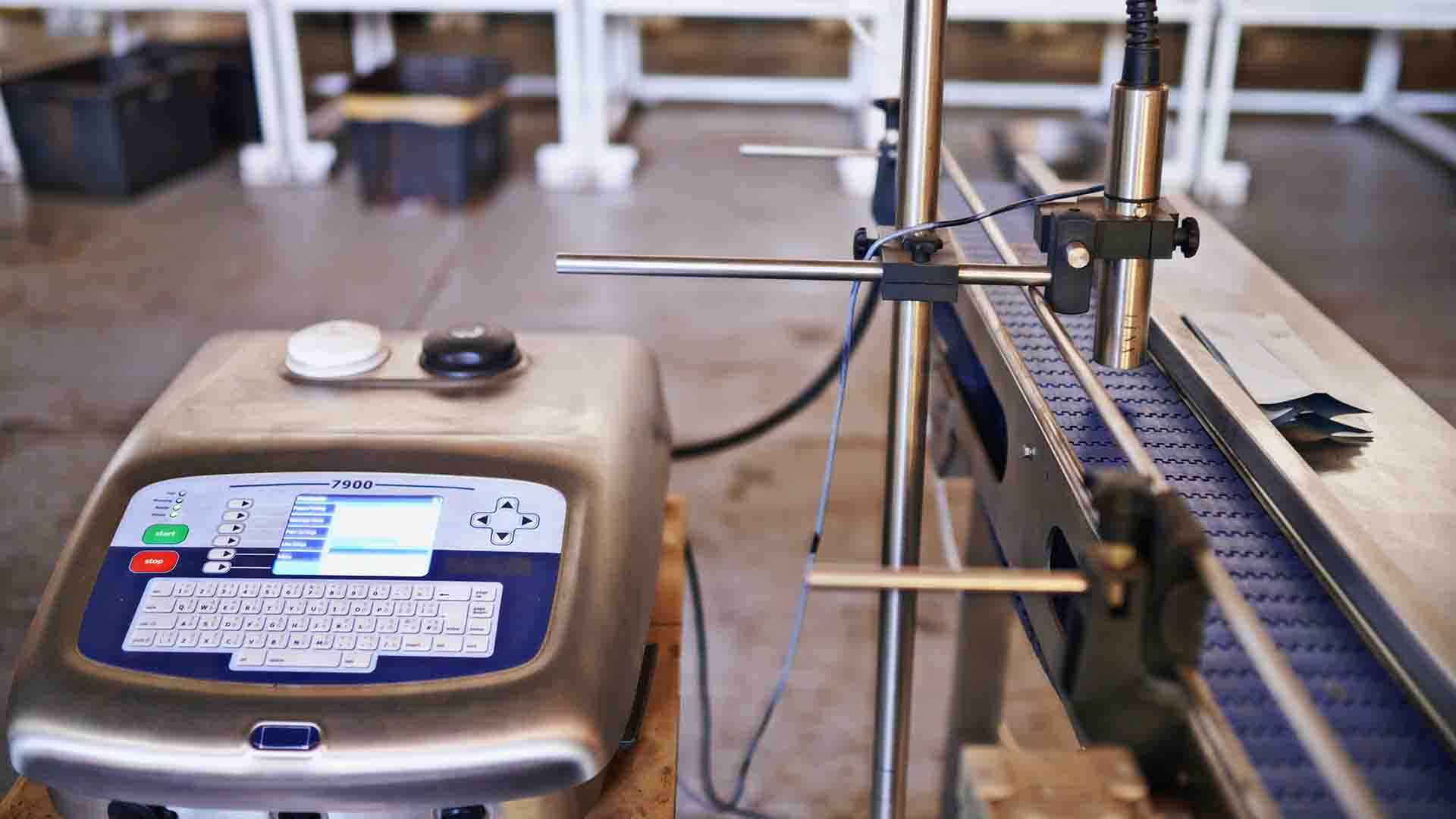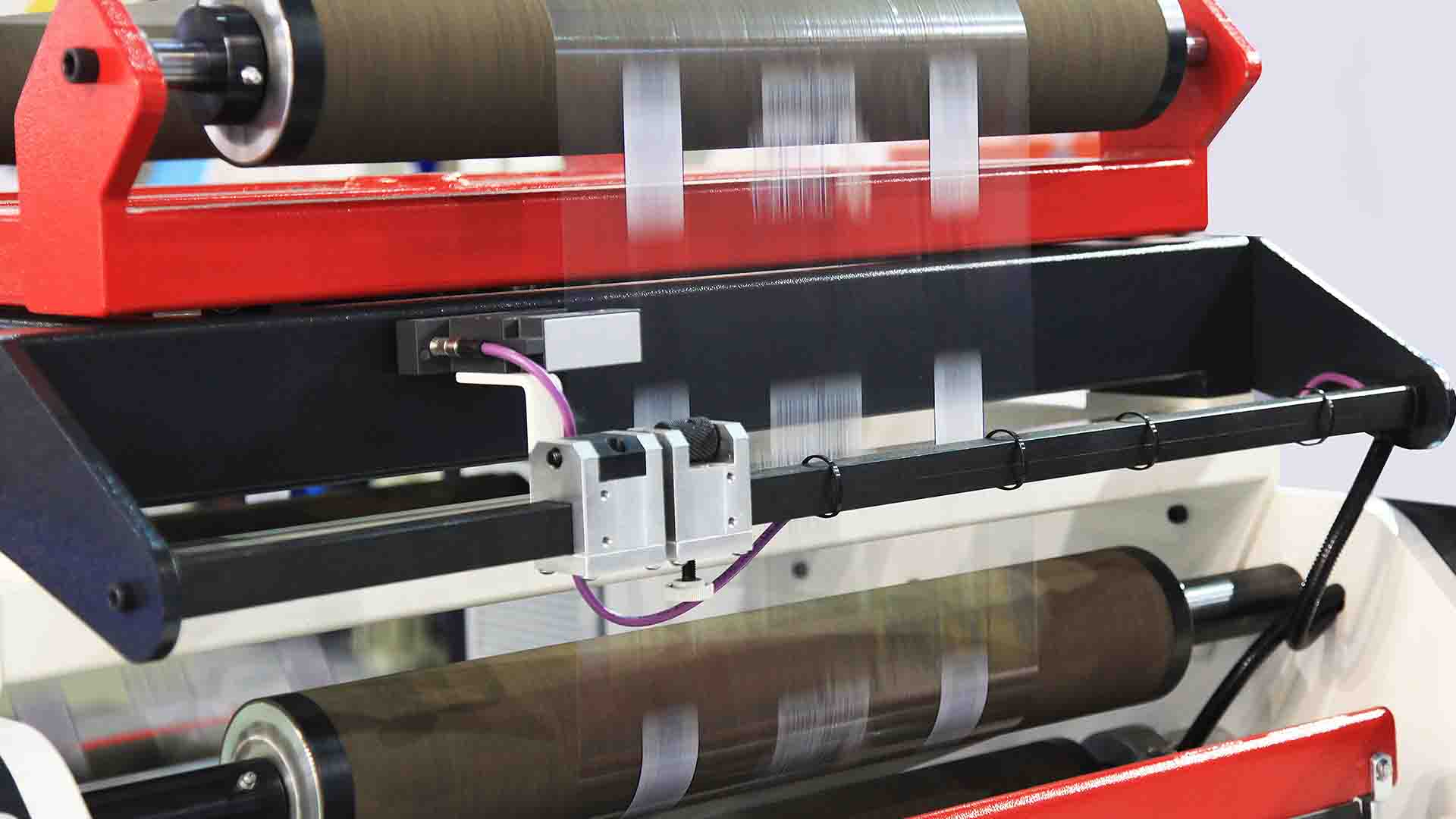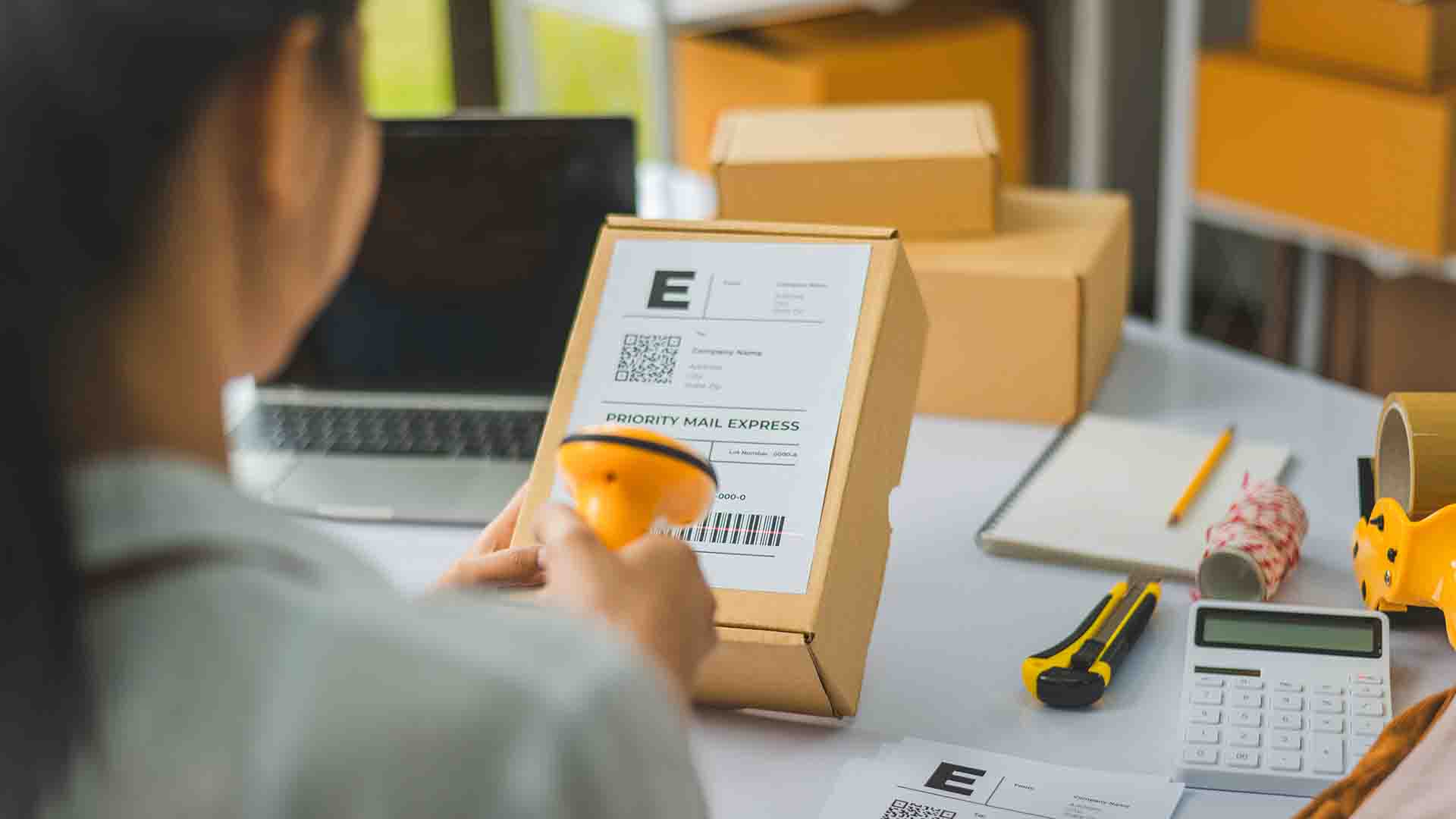

In modern manufacturing and logistics, reliable product labelling is not only a legal or quality control obligation, but also part of a smooth supply chain. Marking devices, also known as markers, allow real-time printing of dates, batch numbers, barcodes or QR codes directly on packaging and products. This helps to ensure traceability, reduces the risk of errors and downtime, and enables rapid adaptation to market or customer requirements.

If you need to clearly and reliably display expiry dates, LOT/serial numbers, barcodes or QR codes on your packaging or products, the marking devices do it in real time, where production takes place. The right technology means that every item goes out with a readable, correct and auditable code, and you reduce errors, downtime and risks in your supply chain.
Nes mes ne tik tiekiame įrangą ar siūlome sprendimus – mes kuriame vertę, kurią jaučia Jūsų verslas kiekviename žingsnyje.
UAB „Vygėja“ – tai patikimas partneris, kuriam rūpi ne tik rezultatas, bet ir Jūsų kelias link jo.
How to understand what you need
The first step is the surface (paper/cardboard, film, PE/PP/PET plastics, glass, metal, wood) and the conditions (dust, moisture, condensation, cold/heat). Then there is the speed and distance to the product: the higher the speed and the fluctuating gap, the more stable the technology is required. Thirdly, content and size: whether it is small text, 2D codes with high resolution or large symbols on boxes/pallets. Finally, maintenance costs: whether you are comfortable with tapes/ink or whether you prefer a consumable-free solution such as a laser.

Thermal inkjet printing (TIJ) markers give a very sharp, clean print and ease of use. They are ideal for porous surfaces (paper, cardboard) and, with the right inks, for coated or plastic lids. TIJ works well when you need high resolution (for labels, boxes, ingredient texts) and when you want a low-maintenance device or even a portable option for different workstations.
Continuous ink flow (CIJ) technology is a workhorse when it comes to very high speeds, curved surfaces and consistent line work. CIJ marks stably on plastic, glass, metal, and prints on moving, vibrating or distance-varying objects. It is a typical solution for beverages, chemicals, cables, pharmaceuticals where reliability and versatility are key.
Drip on demand (DOD/Piezo) printing is used when larger characters and a high print area are needed on corrugated cardboard boxes, pallets or wood. Instead of pre-printed boxes, you print variable information at the last stage of packaging, which reduces the storage of packaging variants and makes it easier to change the content “here and now”.
Thermal transfer (TTO) printers are the standard for flexible packaging (films, pouches, label rolls) where sharp, stable printing with ingredients, allergen labelling, dates and barcodes is required. The TTO works in intermittent or continuous mode on form-fill-seal applications, and the choice of ribbon allows a balance between cost and resistance.
Laser markers (CO₂, fibre/fibre, UV) create a permanent, indelible marking without consumables. CO₂ lasers are excellent on cardboard, glass and many plastics (especially with special layers), fibre lasers on metal and technical plastics, UV lasers on thin films or heat-sensitive materials where high contrast is required. Lasers require fume extraction and safety, but in the long run reduce “chemical” logistics and downtime for routine servicing.
Print & Apply (print-seal) systems print and apply labels to boxes, packages or pallets in one step. They interface neatly with ERP/WMS, make precise automatic batch or address changes, and allow you to choose the application method (swipe, wipe, blow, corner-wrap) according to your line dynamics.
Inks, contrast and conformity
For the code to be readable on the first scan, the right ink chemistry needs to be selected: water-based inks are ideal for porous surfaces, solvent-based (MEK/ethanol) or UV-curable inks are ideal for non-porous ones. Pigment-based inks provide contrast on dark or transparent surfaces, fast-drying inks allow high speeds without spillage, and food-grade/low-migration blends are chosen where contact or migration control is required. If your goal is long outdoor durability or sterilisation cycles, it’s worth checking UV, chemical, abrasion and condensation resistance with us in advance.
What technology is hidden in a “handheld” device
The most common handheld printers use thermal inkjet (TIJ) or drop-on-demand (DOD/piezo) technology. TIJ-based devices offer very clean operation, high resolution and cartridge ink; they are ideal for porous surfaces and, with the right solvent inks, can successfully mark non-porous substrates. Typical TIJ print heights on handheld devices are around 12.7 mm (½”), while higher heights and multi-line messages can be achieved with “stitched” modules. DOD-type handheld “guns” (e.g. industrial grade solutions) can print significantly higher heights, from ~7 mm to >50 mm or even more, and are therefore suitable for bold lettering on crates, wood, steel or concrete.
When manual solution wins over stationary
The handheld marker is the best friend where geometry is unpredictable or logistics are variable: for example, in project orders, make-to-order production, PDI/service areas, transhipment points or when you need to temporarily re-mark goods without the need for additional stands and guides. It’s also a great back-up plan if the stationary printer stops – you’ll still send out the goods with the required markings. It’s true that when line speeds are extremely high, product movement is unstoppable and the distance to the surface varies, stationary CIJ or other inline solutions remain the gold standard because they spray ink at high speed and maintain quality even on curved surfaces. The manual option fills a niche here: flexible, but not to replace the highest speed inline coding.
The best place to start is with three questions: what are you printing on today and tomorrow (surface, colour, roughness), what size and type of content is needed (small text, QR/DataMatrix, large characters), and where will the printing take place (shop floor ‘hot zones’, field, ramp, up/down on vertical planes). If you have a lot of boxes, pallets and large workpieces, choose a DOD handheld printer with a higher height; if clear text and 2D codes on cardboard or lacquered boxes are the most important thing, choose a TIJ-based handheld model for high resolution and clean operation.

If you need clear, reliable and indelible marking results without inks, tapes or solvents, laser devices are the way to go. The laser forms the mark directly in the material, so codes don’t disappear from moisture, grease or abrasion, and overall running costs go down because there’s no need for “chemistry” and daily refills. It is this principle of no-waste materials that often makes laser marking a more sustainable alternative – less waste, less downtime, more stability in auditing and traceability.
Which technology is right for whom?
In practice, the decision is based on the material and the contrast required. The fibre laser is ideal for metals (steel, aluminium, brass, etc.) – it quickly produces a bright code in a thin area, making it a favourite for marking tools, automotive and pharmaceutical components. The CO₂ laser is particularly strong on “organics”: cardboard, paper, wood, glass, ceramics and many packaging films; it is also often used for cutting or perforating packaging. The UV laser operates in ‘cold’ (photochemical) mode, so it heats the material minimally – a safer route for sensitive plastics, electronics, medical packaging and precision glass where a fine, high-contrast mark is required.
When you’re planning your labelling, it makes the most sense to start with the surface you’ll be printing on, rather than the device model. The material determines which technology to choose (inkjet or laser), which ink chemistry will provide the contrast, whether a ‘cold’ laser is needed and whether the mark will last after washing, sterilisation or UV exposure. Below is a practical, you-centred guide to the four most common material groups.
Plastics
Plastics are very different: PE/PP has low surface energy (harder to “stick”), PET/PC/ABS is more adhesion-friendly. If you are looking for a versatile, fast and cost-effective solution, CIJ (continuous inkjet) printing with fast-drying solvent-based (MEK/ethanol) inks provides a clear code on most unpaired plastics and allows you to work at high speeds. These inks are designed to evaporate in seconds and ‘capture’ the code while the product is in motion.
Metal
On metal, the fibre laser is the “gold standard”: it works equally well on stainless steel, aluminium, titanium, brass, etc., and MOPA configurations allow you to control the duration and frequency of the pulse for deep engraving, a black “annealed” mark, or ultra-clean contrast over a small area. These marks are non-erasable, chemical and abrasion resistant, making them suitable for automotive, tooling, pharmaceutical components and anywhere where a long-lasting traceable mark is needed. If you are looking for high productivity without “chemistry” on the line, this is a solution that has low operational variability.
Tree
Wood and other “organics” (plywood, cardboard) are ideal for absorbing the CO₂ wavelength of the laser, so the marking is contrasting, stable and highly accurate – from a small logo to a large QR code on the edge of the tray. It is the perfect choice when you want a neat mark without paint or tape: branding on furniture, wine barrels, wooden crates, shipping pallets. If you want a temporary or vivid “shadow” without a burn effect on a light surface, you can use DOD inkjet printing with pigment ink; but when cleanliness, detail and durability are important, the CO₂ laser will usually give you the most beautiful result.
Glass
You can mark the glass in two directions. Firstly, in ink (usually CIJ) for clear dates and batches in the beverage industry; there are even special “returnable” inks that last the “lifetime” of the bottle but wash off reliably at the bottle washing station, so they are suitable for reusable chains. Second, laser for a permanent, indelible mark: CO₂ produces a “frosting” effect, while the UV laser allows “cold” extraction of a very fine, precise mark on sensitive glass or thin packaging, minimising the risk of micro-cracks. If you are working with moulded glass, you may need to decide between hot-end and cold-end marking – we usually recommend a realistic assessment of the wash/sterilisation cycles and to choose a technology that will truly ‘survive’ the whole process.